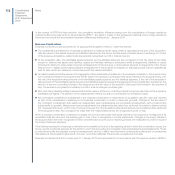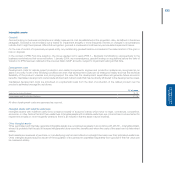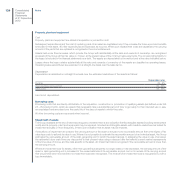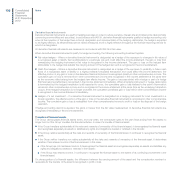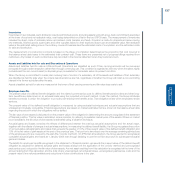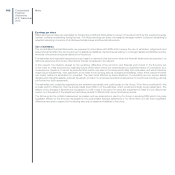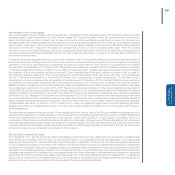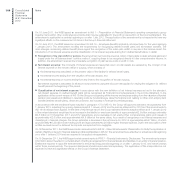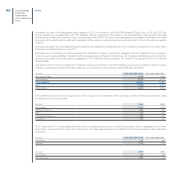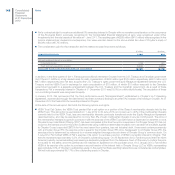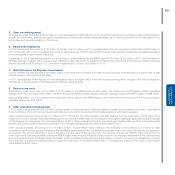Chrysler 2012 Annual Report Download - page 143
Download and view the complete annual report
Please find page 143 of the 2012 Chrysler annual report below. You can navigate through the pages in the report by either clicking on the pages listed below, or by using the keyword search tool below to find specific information within the annual report.
Notes
142 Consolidated
Financial
Statements
at 31 December
2012
Pension plans and other post-retirement benefits
Employee benefit liabilities together with the related assets, costs and net interest expense are measured on an actuarial basis which
requires the use of estimates and assumptions to determine the net liability or net asset. The actuarial method takes into consideration
parameters of a financial nature such as the discount rate and the expected long term rate of return on plan assets, the rates of salary
increases and the rates of health care cost increases and the likelihood of potential future events estimated by using demographic
assumptions such as mortality rates, dismissal and retirement rates.
In particular, the discount rates selected are based on yield curves of high quality corporate bonds in the relevant market. The expected
returns on plan assets are determined considering various inputs from a range of advisors concerning long-term capital market returns,
inflation, current bond yields and other variables, adjusted for any specific aspects of the asset investment strategy. Rates of salary
increases reflect the Group’s long-term actual expectation in the reference market and inflation trends. Trends in health care costs are
developed on the basis of historical experience, the near-term outlook for costs and likely long-term trends. Changes in any of these
assumptions may have an effect on future contributions to the plans.
As a result of adopting the corridor method for the recognition of the actuarial gains and losses arising from the valuation of employee
benefit liabilities and assets (see the above paragraph - Employee benefits), the effects resulting from revising the estimates of the
above parameters are not recognised in the statement of financial position and income statement when they arise. The disclosure of
the effects of changes in estimates is discussed in Note 26.
Allowance for obsolete and slow-moving inventory
The allowance for obsolete and slow-moving inventory reflects management’s estimate of the loss in value expected by the Group, and
has been determined on the basis of past experience and historical and expected future trends in the used vehicle market. A worsening
of the economic and financial situation could cause a further deterioration in conditions in the used vehicle market compared to that
already taken into consideration in calculating the allowances recognised in the financial statements.
Incentives
The Group recognises the estimated cost of sales allowances in the form of dealer and customer incentives as a reduction of revenue at
the moment revenue is recognised and later if new or changed incentives are subsequently announced to dealers . There are numerous
types of incentives used in the Group, and these change frequently in response to market conditions; for this reason several factors
are used to estimate the amount of incentives and a change in any one of these factors could have a significant effect on the amount
of revenue recognised.
Product warranties
The Group makes provisions for estimated expenses related to product warranties at the time products are sold. The estimate of the
provision is based on historical information concerning the nature, frequency and average cost of warranty claims. The Group seeks to
improve vehicle quality and minimise warranty expenses arising from claims.
Contingent liabilities
The Group makes a provision for pending disputes and legal proceedings when it is considered probable that there will be an outflow of
funds and when the amount of the losses arising from such can be reasonably estimated. If an outflow of funds becomes possible but
the amount cannot be estimated, the matter is disclosed in the notes. The Group is the subject of legal and tax proceedings covering
a range of matters which are pending in various jurisdictions. Due to the uncertainty inherent in such matters, it is difficult to predict the
outflow of funds which will result from such disputes with any certainty. Moreover, the cases and claims against the Group often derive
from complex and difficult legal issues which are subject to a different degree of uncertainty, including the facts and circumstances of
each particular case, the jurisdiction and the different laws involved. In the normal course of business, the Group monitors the status
of pending legal procedures and consults with legal counsel and experts on legal and tax matters. It is therefore possible that the
provisions for the Group’s legal proceedings and litigation may vary as the result of future developments of the proceedings in progress.


